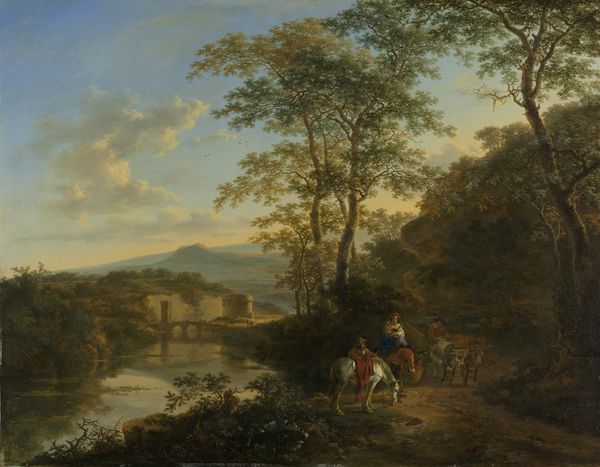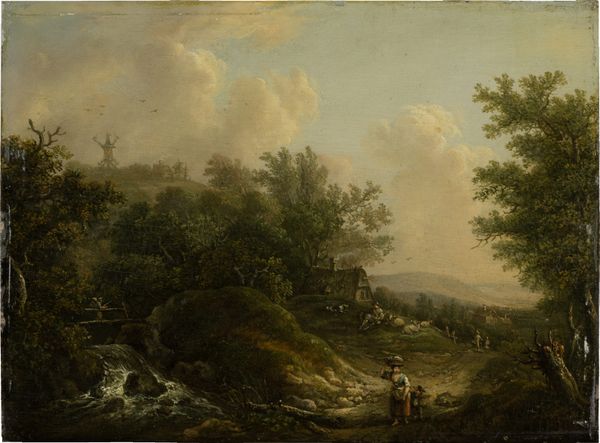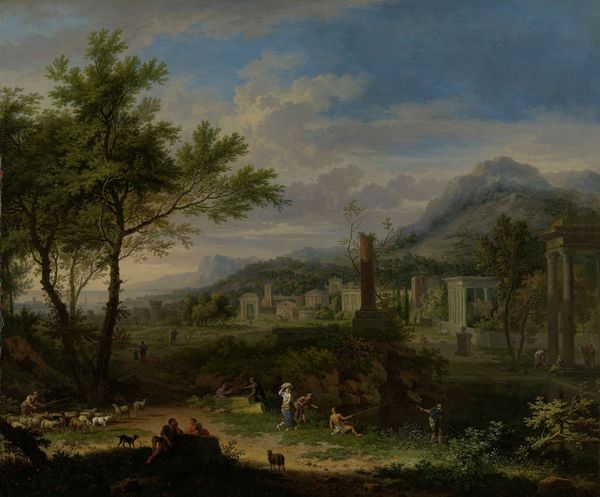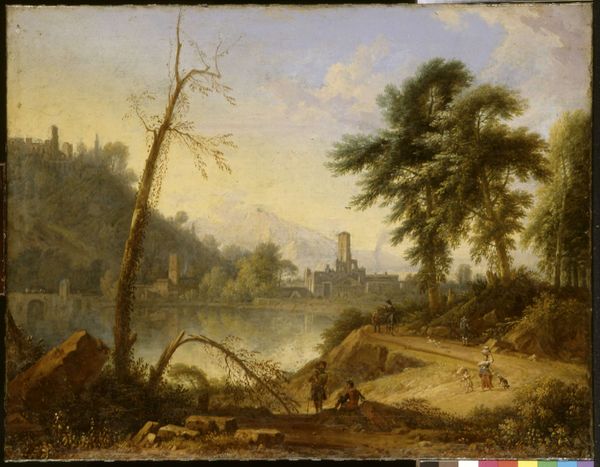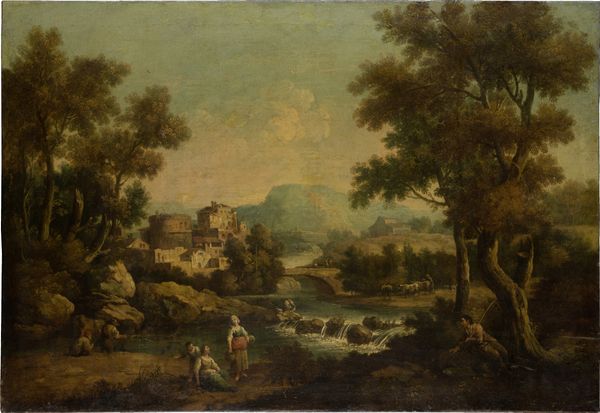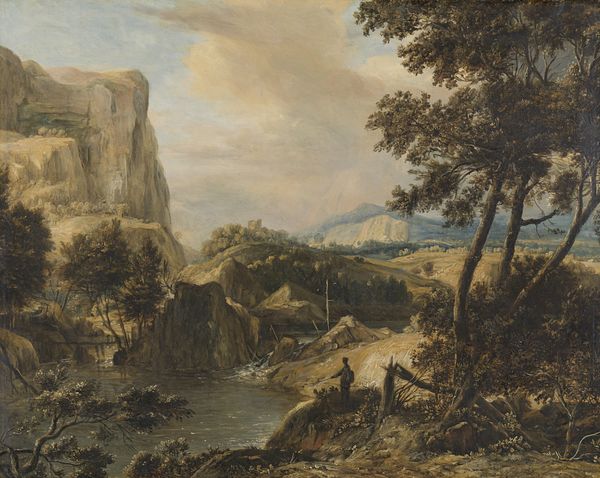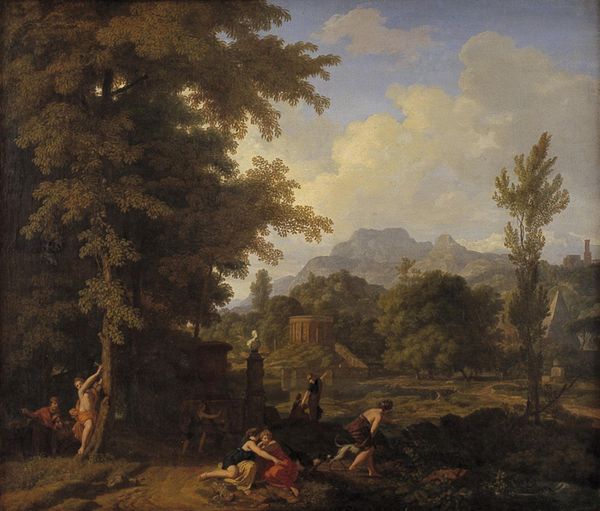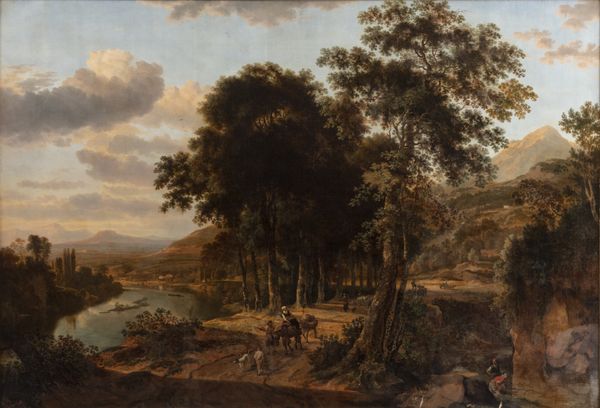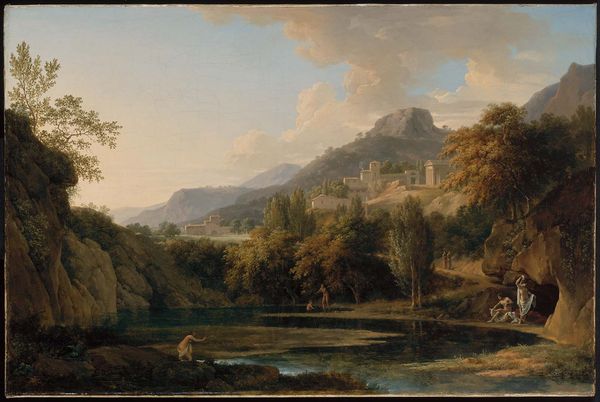
painting, oil-paint
#
baroque
#
painting
#
oil-paint
#
landscape
#
classical-realism
#
genre-painting
#
realism
Dimensions: height 51.5 cm, width 67.0 cm
Copyright: Rijks Museum: Open Domain
Curator: Editor: This is “Italian Landscape with a Fallen Tree” painted by Nicolaes Piemont before 1709, using oil paint. There’s a real sense of tranquility here, almost like a staged pastoral scene. What elements jump out to you most in terms of how Piemont crafted this? Curator: Immediately, my attention is drawn to the materiality itself. Observe how the oil paint, likely carefully sourced and mixed with specific binding agents, is layered to create a very convincing sense of depth and texture. The pigments Piemont selected, consider where those originated and the cost and labor required to get them to his studio. Editor: So, it's less about the landscape itself, and more about the physical making? Curator: Precisely! How the materials used create class divisions between artists then, as only wealthy artists like Piemont, whose main themes are Genre Paintings and Landscapes, could use those quality materials. Look closely. Is there a consistent level of detail throughout, or does Piemont seem to have focused his energy and richer pigments in specific areas? Editor: I notice richer detail on the foreground figures and foliage, almost like they're more 'finished' compared to the castle in the background. Curator: Exactly! And what does that say about his intentions and his market? Wealthy patrons would probably prioritize scenes of leisurely activities, not just idealized nature. Does the broken tree become more meaningful when viewed this way, as the natural decay to enhance labor-intensive human presence and recreation? Editor: That perspective really reframes the whole image. The process behind the creation becomes the narrative itself. Curator: Right. Seeing how artistic creation and its reception, can both contribute meaningfully to what's happening in art and cultural expression.
Comments
No comments
Be the first to comment and join the conversation on the ultimate creative platform.
